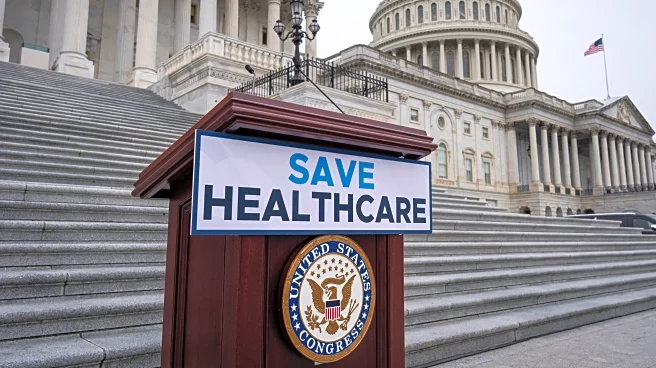What is the story about?
What's Happening?
The U.S. healthcare market is experiencing a significant divergence in cost trends between public and private sectors. While Affordable Care Act (ACA) premiums are seeing substantial increases, with some insurers requesting hikes as high as 43%, real-world claims data from self-funded employers indicate a more stable cost environment. According to Nomi Health, ACA insurers are justifying these increases due to rising patient utilization, worsening risk pools, and price inflation. For instance, Molina Healthcare is seeking a 41% increase in Florida, while United is requesting a 43% increase in Georgia. In contrast, data from self-funded employers, covering over 20 million lives, show medical spend rising by only 1.75% per member per month, with a decline in claim volume by 2.17% per 1,000 members.
Why It's Important?
The disparity in cost trends between ACA premiums and self-funded employer plans could have significant implications for the U.S. healthcare system. The sharp increase in ACA premiums may lead to a rise in uninsured populations, as individuals and families may find coverage unaffordable. This could result in healthcare providers shifting the costs of uncompensated care to other areas, potentially increasing negotiated rates across all commercial contracts. Industry analysts suggest that this could lead to an increase in annual costs for the 179 million people with job-based coverage by $182 to $485. Employers who proactively manage their healthcare data and expenses may be better positioned to mitigate these potential cost increases.
What's Next?
Employers and stakeholders in the healthcare industry will need to monitor the situation closely to anticipate potential spillover effects from the ACA market stress. This includes being vigilant about network contract disputes and hidden pricing strategies that could impact their plans. By taking proactive measures, employers can protect their plans from subsidized expenses and manage future cost increases effectively.
AI Generated Content
Do you find this article useful?
















